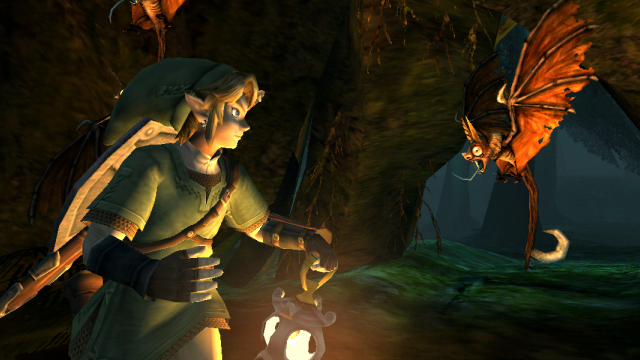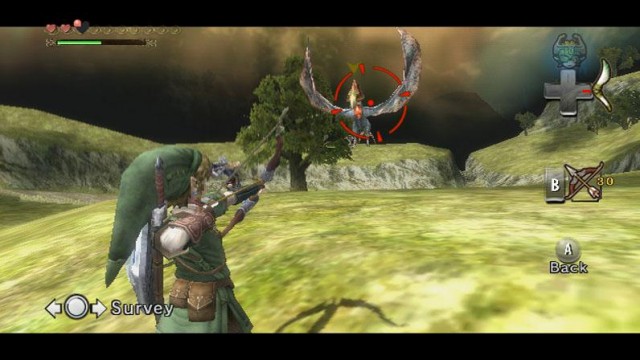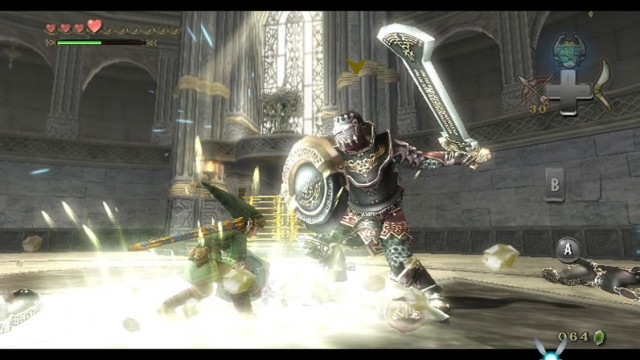
|
The release of Pandora’s Tower in North America was a special event, not because it was the culmination of Operation Rainfall’s heroic attempt to get three of Wii’s most prominent JRPGs localized (though that was certainly noteworthy in its own right), but because it marked what was presumably the last major release for the aging console. Barring any future movie tie-ins, it looks like Nintendo’s fifth-generation platform is now ready to ride off into the digital sunset. But before it takes its rightful place in gaming history, the staff wanted to bid the console one final farewell with a week-long tribute. Five writers, offering five different perspectives on the system, celebrating its impact on the industry and looking back on some of the gaming classics it’s spawned since its release. We hope you enjoy!
Wii was something of a cultural phenomenon when it first debuted. Nintendo had done a remarkable job generating anticipation for the system thanks to its unique remote-shaped controller and its pack-in juggernaut Wii Sport, which captured the imagination of gamers young and old with its motion-controlled gameplay. But while Wii Sports turned the console into a household item and opened the medium up to those who had never before played video games, it was The Legend of Zelda: Twilight Princess that defined the system’s launch and set the precedent for how to incorporate motion controls in a traditional gaming experience.
On the surface, Link’s foray into a darker, grittier Hyrule may have seemed like a direct response to the bright, seafaring adventure of The Wind Waker, and to a certain extent, it was. Wind Waker had caused a deep rift in the Zelda fan base thanks to its low difficulty and cartoony visuals (not to mention reinforced Nintendo’s kiddy image, which hurt the company’s credibility with Western gamers, who were becoming an increasingly important segment of the gaming population). Nintendo sought to rectify these criticisms with Twilight Princess, eschewing Wind Waker’s colorful art style for a more subdued and realistic aesthetic, increasing the difficulty of the game’s dungeons, and crafting a more somber tale to serve as the catalyst for your journey.
The end result was a game that felt more conservative than its cel-shaded predecessor, but that safeness belied just how engaging its underlying quest was. Twilight Princess may not have been as visually daring as The Wind Waker, but it was a much more refined game, making up for its familiarity with rock-solid gameplay. Dungeons were more plentiful and better designed than in Wind Waker, culminating in some of the most memorable boss battles in the entire series. Likewise, Link’s arsenal was more varied and better utilized throughout the game, making the items you acquired less like glorified keys and more like unique power-ups that the hero could equip.

But perhaps the most impressive aspect of Twilight Princess was its version of Hyrule, which was the most beautiful rendition of the kingdom in any Zelda game to date. Hyrule Field was breathtaking in its scope, encompassing a wider variety of terrain than it did in previous titles. The sprawling meadows of the Faron Province were already larger than the entirety of Ocarina of Time’s hub area, but they made up only a small portion of Hyrule’s geography. Head further north and the verdant greens of Faron bled into the reddish browns of Eldin, which in turn gave way to the grey mountain faces of Lanayru, where Hyrule Castle Town, the heart of the kingdom and the scene of the game’s climactic final battle, was located.
Each province was also dotted with its own unique landmarks, which gave the environments a distinct sense of history. Seeing the Great Bridge of Hylia for the first time, its support columns dangling above Lake Hylia like giant, man-made stalactites, was one of the most awe-inspiring moments in the series, as was the first time you set foot in the Arbiter’s Grounds, its colosseum-like walls moldering in the hot sands of the Gerudo Desert.
Of course, the game’s strengths extended beyond just its cosmetic flourishes. Swordplay was also vastly improved in Twilight Princess, offering the most nuanced combat in the series to date. This, too, felt like a direct response to Wind Waker, whose parry system had effectively reduced battles to quick-time events. You still had full control over Link’s attacks just as in any previous Zelda game, but the most effective– and certainly the most expedient– way to dispatch foes was to wait until the A button lit up, which would launch the elfin hero into an unstoppable finishing move.
Twilight Princess retained these super attacks, but rather than unleashing them with the press of a button, they were scattered about the game as hidden techniques which had to be learned and manually executed during battle. This gave players a greater degree of control in combat, turning each encounter into a graceful dance between you and your opponents: you could make quick work of your foes by incapacitating them with a shield bash and following up with a helm splitter, or you could wait until one drew near enough to finish off with a devastating mortal draw. If your foe was heavily armored, you could dodge its attack with a quick roll and leap into the air with a back slash, removing its breastplate and leaving it susceptible to further attacks. The sheer range of options at your disposal made each battle exciting and unpredictable.

This was further enhanced by the Wii Remote, which brought a new dynamic to the gameplay. Twilight Princess may not have had the benefit of the Wii MotionPlus (which improved the Wii Remote’s accuracy and allowed for near 1:1 swordplay in future Wii titles), but it nevertheless made great use of the controller’s features. Sword attacks were initiated with gestures rather than button presses, making combat more physically immersive than ever before. Link’s swipes may not have directly correlated with your movements, but the novelty of swinging the controller to attack foes was enough to compensate for its inaccuracy.
Where the Wii Remote really proved its worth, however, was in archery. Aiming became far more intuitive thanks to the remote’s pointer functionality, allowing you to snipe at targets with pinpoint accuracy. This made the bow one of the most invaluable weapons in your arsenal, as you could take out foes and activate switches quickly and easily, regardless of their distance.
While its eventual followup Skyward Sword would make even better use of the Wii Remote (and would finally realize the potential of motion controls in a traditional video game), I still consider Twilight Princess to be the better of Wii’s two Zelda games. The title may have had its missteps; its introductory chapter was poorly paced, and the wolf mechanic, despite some clever uses, was a bizarre gimmick that added no real value to the gameplay. But even with these blemishes, Twilight Princess was an excellent installment of the legendary series, one that could stand proudly alongside later classics such as Super Mario Galaxy, Metroid Prime 3, and Xenoblade Chronicles (among many others) as one of Wii’s finest titles.




 ShareThis
ShareThis







